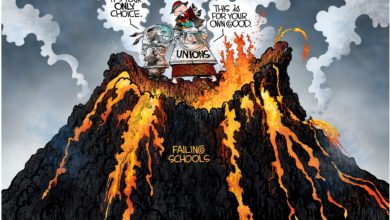Why Dow 10,000 May Not Matter
 The last week has produced a euphoria in the market-place. The DOW has crossed (and again fallen below) this psychological barrier in the stock market. Many point at the crossing as a sign that the market is recovering. The DOW industrial index has gone from under 7,000 to 10,000 in the past several months and is certainly feeding on it’s own momentum. The real question is if the top line (revenue) growth is really out there to support these levels.
The last week has produced a euphoria in the market-place. The DOW has crossed (and again fallen below) this psychological barrier in the stock market. Many point at the crossing as a sign that the market is recovering. The DOW industrial index has gone from under 7,000 to 10,000 in the past several months and is certainly feeding on it’s own momentum. The real question is if the top line (revenue) growth is really out there to support these levels.
Three pieces of seemingly good news seem to have sparked the push over 10,000. Intel announced that its sales forecast for the fourth quarter will be as much as $1 Billion higher than estimates, manufacturing output increased by .5% more than forecasters had hoped, and inflation stayed low.
The Intel story sounds great, but upon digging into the past, cracks appear in the good news. Year-over-year, their top-line is still shrinking. Some believe that Intel’s sales increasing is a harbinger of the overall U.S. economy improving, but as an article on Bloomberg.com stated, a large portion of the increase is coming from China. There are also concerns that the augmented sales forecast is based on Windows 7 forcing many U.S. households to upgrade their existing PCs. So far, the Windows marketing campaign has fallen on mostly-deaf ears as consumers seem to have shrugged-off the new operating system as a why-bother.
Manufacturing output also increased more than anyone had expected. This comes on the trail of two prior months of output increases. One concern might be that the industrial sector is turning around so quickly while most others are still languishing. The output rebound does appear to be broad-based as the diffusion index, a gauge of a number of manufacturing categories, shows that more sectors than just automobiles are improving. Autos only accounted for .2% of the .7% increase. It is possible that manufacturers are preparing for the Christmas retail season or perhaps this is an after-effect of the trillions of dollars of spending from multiple countries. To be sustainable, there has to be something more fundamental, because the stimuli will end, and consumer spending is estimated to be less this Christmas than last.
A fundamental return to growth would be outstanding, but to believe that we’re going from deep recession to growth so-quickly defies logic. Searching the recent economic data it is difficult to find the real support for a true recovery. IBM stated on the Friday that its signed contracts dropped 7% in the most-recent quarter to their lowest levels in 18 months. Oil is approaching $80 per barrel on a weakening dollar, as if the weakened U.S. currency wasn’t a large-enough issue on its own. Major financial houses and financial sections of companies are still showing incredible weakness. Bank of America is in crisis as it tries to suffer-through mounting residential mortgage defaults. General Electric posted a troubling quarter due to its financial division taking huge losses. To top it all off, the President’s own economic team briefed him this week that the commercial lending market is on-track to follow the residential mortgage crisis. Congress is already talking about adding more than $200 Billion to the current stimulus, but why would we need to do that if it was already working?
We should be hopeful that with signs like improving manufacturing output and technology showing signs of life, a sustainable recovery could begin. We also have to be wary that we are pouring too much money into equity markets. This only serves to hyper-inflate their values setting us all up for the second half of a W-shaped recovery – the double-dip recession. If that occurs it will be a bloodbath for those who put more money into a market than they could afford to lose, hoping it would not go down, and it does.
Investors are pouring more than 17 times more money into bond funds than equity funds. That would seem to show a flight-to-quality one would not expect in a blossoming equity market. Optimism does not have to put investors into unrealistic positions such as houses they can’t afford, stocks they shouldn’t buy, cars they don’t need… It should simply get us to start looking for the real, supportable recovery and how to invest in those businesses that are fundamentally sound.




